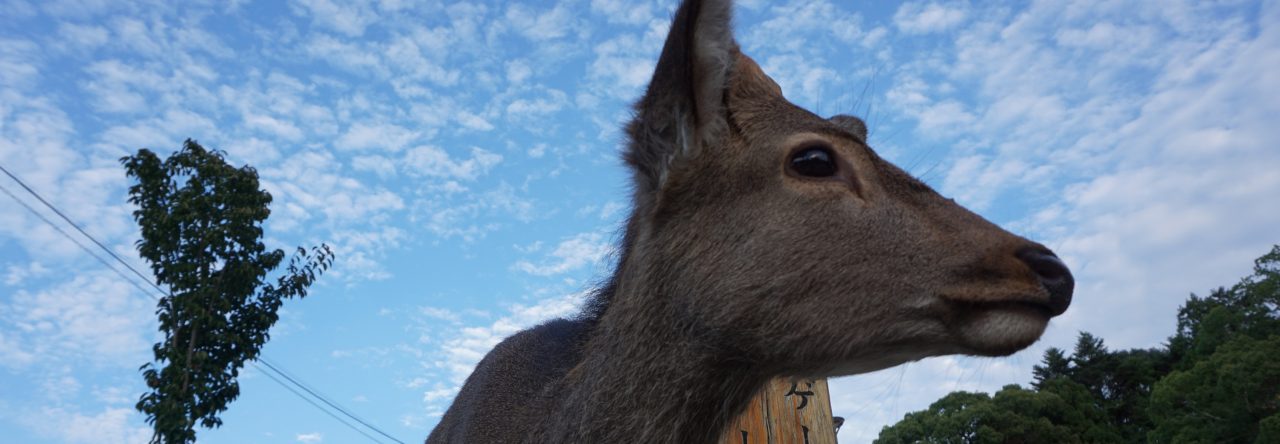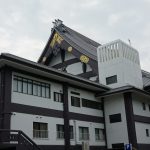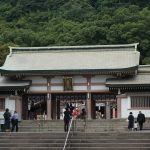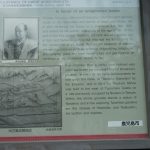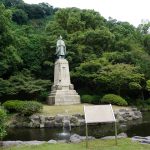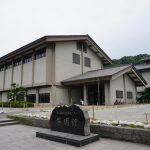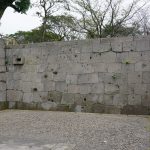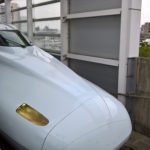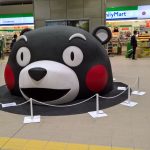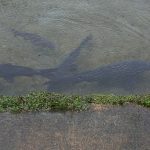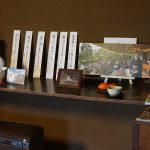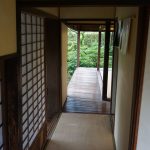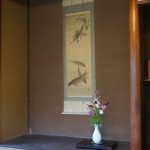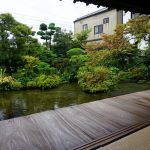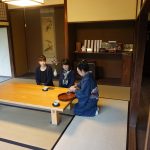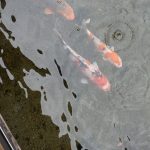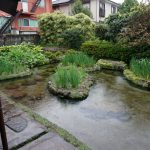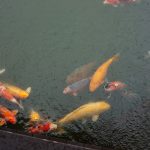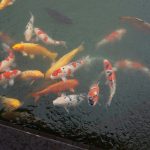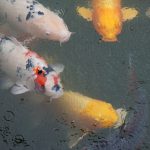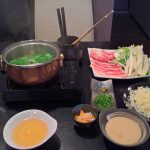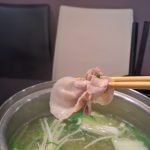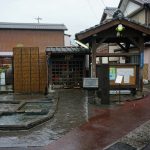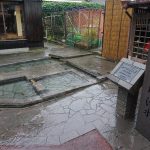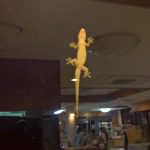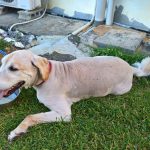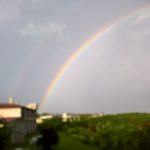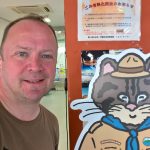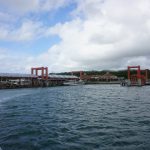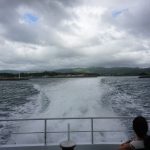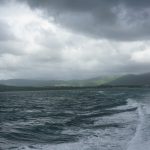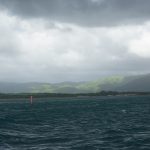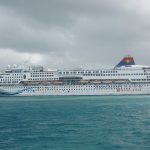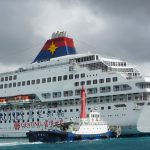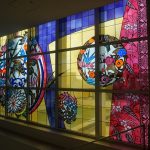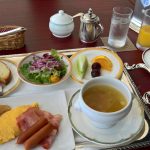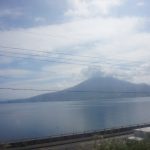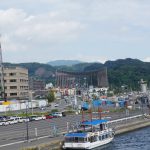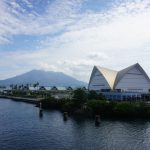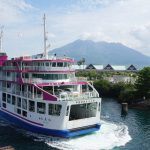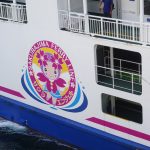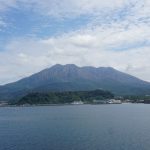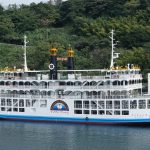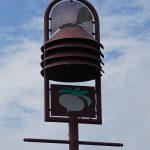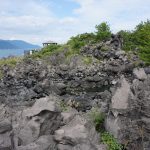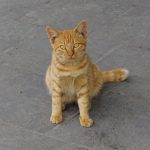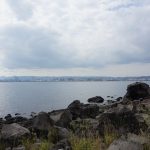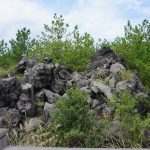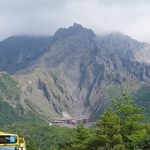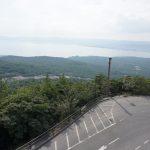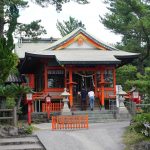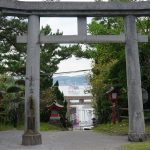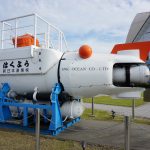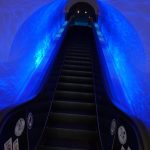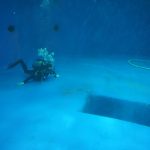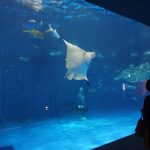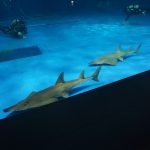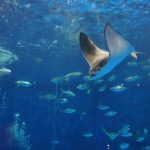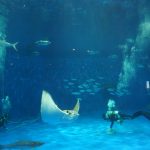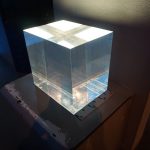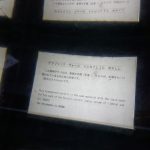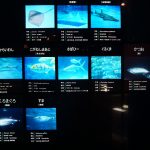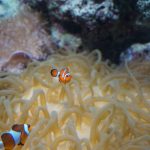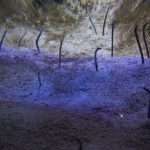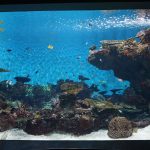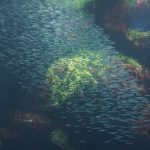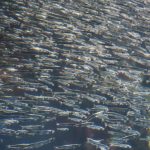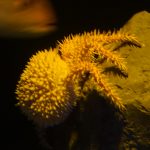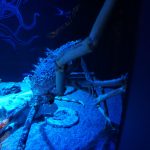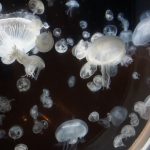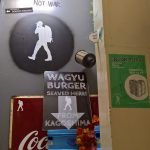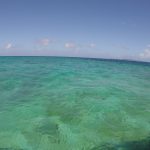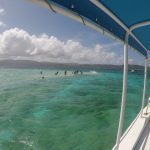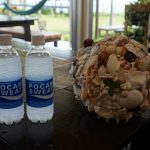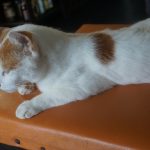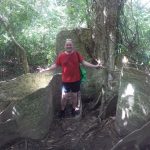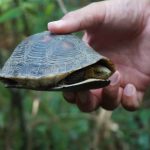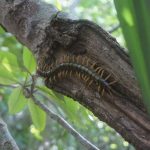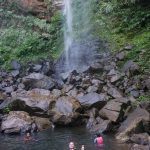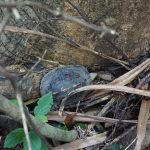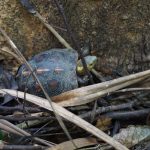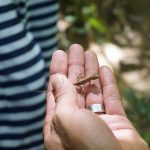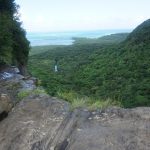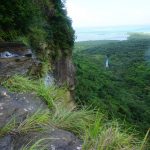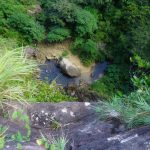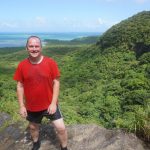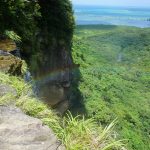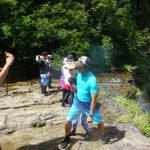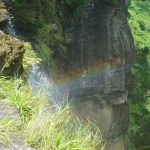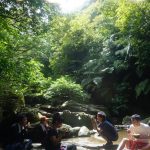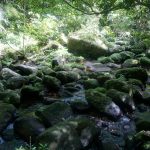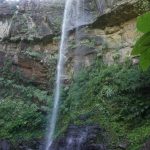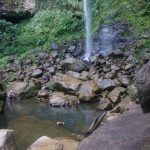Saturday 14th
I was awoken around 3am by a sound I never wanted to hear in Japan – loud sirens that usually signify threats like earthquake or tsunami. Luckily they only sounded for a few seconds, so not sure if it was just a particularly loud emergency vehicle (but I don’t think so…). Back to sleep quickly, and the next morning as I was getting ready I heard a different sound in the street below my 11th floor room – this time it was a minibus fitted with large horn speakers, delivering political messages – we’re just a week away from elections in Japan, with Prime Minister Shinso Abe calling an election early – I’m sure he’s hoping to do better than our own Maybot…
Headed out to seek breakfast at a branch of Seattle’s Best Coffee. Decided that a cookies and cream muffin with iced coffe would hit the spot – and yes, that is an entire Oreo cookie baked into the top of the muffin.
Spot of culture today – walked via a number of locations, ending at the Kagoshima Reimeikan museum of local history. First photo is of a modern, but classically styled Buddhist temple. Then on to the Terukuni shrine, and its sculpture garden. This landmark 19th century Shintō shrine features a tree pruned into the shape of a flying bird.
Then in the sculpture garden, came across statues of two of Kagoshima’s famous sons – Shimazu Nariakira (surname comes first in Japan), and his brother Shimazu Hisamitsu. Nariakira was a politician but also a great moderniser and supporter of technology in the mid 19th century. He helped form business partnerships with the UK that brought many industrial and technical improvements to Japan, and Kagoshima was the first place in Japan to have gas street lighting. His brother Hisamitsu was also well known – but for the wrong reasons – it was his retinue’s treatment of British subjects (killing one, injuring two others) for not showing enough respect in the Namamugi Incident that led to the aforementioned Anglo-Satsuma war.
Very interesting stroll round the museum (which is on the site of the old Shiroyama castle), spotted an amazingly decorated palanquin – a carrying chair for higher class citizens in feudal Japan. Also, masses of bullet holes on the old castle walls – these from the Satsuma Rebellion of 1877, where the remnants of the Satsuma Samurai unhappy with the Meiji restoration and loss of their old rule made their last stand.
Having made the genius move of taking the wrong tram back to Kagoshima station, I was able to change trams and get a couple of photos of the one I’d been riding. Then to my next iron steed – first bullet train of the trip – shinkansen time! Headed north at speeds of up to 190mph to Kumamoto, then bus to the ferry terminal and a rainy hydrofoil crossing to the port town of Shimabara. Then taxi, getting to the hotel late.
The hotel was a spa hotel – or onsen – and I seemed to be the only Westerner here. The Japanese love to bathe in hot spring water, and this hotel had great onsen baths for men and women. Very family friendly as well. The promotional material was great – lovely blue sky backdrops of the hotel – the reality was a lot of rain while I was here. Since the restaurant had already closed, grabbed a cab into town to visit the “Taj Mahal” – local Nepalese restaurant, one review called it the “best Indian food in Kyushu”. Having no reference point I can’t compare, but it was tasty and much needed.
- My trusty steed
- Giant Kumamon head (Kumamoto mascot)
- Leaving Kumamoto
Sunday 15th
I’d seen a couple of tourist programs on the NHK World channel about Shimabara, which has some lovely old suburbs that have water fed directly from mountain springs. One area has channels down each side of its roads – “Carp Street” – with lots of koi carp. It sits under another volcanic peak which has caused loss of life as recently as 1991 when an eruption led to pyroclastic flows of mud and lava that destroyed an area of houses on the outskirts of the town.
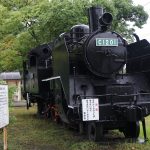 My hopes of hiking Mt Unzen were dashed by the weather – low cloud obscured the summit for most of my time there. I took a long (and wet) walk out into the town for the day, first thing of interest I saw was an old steam engine, parked up at the side of the local shrine.
My hopes of hiking Mt Unzen were dashed by the weather – low cloud obscured the summit for most of my time there. I took a long (and wet) walk out into the town for the day, first thing of interest I saw was an old steam engine, parked up at the side of the local shrine.
It didn’t take me long to find Carp Street, and one of the ‘must see’ old houses called Shimeiso. This is an Edo period building, with a beautiful garden and spring fed pond, where for a small entrance fee you can enjoy green tea while looking out at the pond.
Close to Shimeiso was the local area tourist office, with a very impressive carp pond:
 Walked on through a covered shopping street towards the castle, and was surprised to see a number of people dressed in all sorts of costumes – turns out there was a cosplay (costume – play) event in town, with anime (animation) characters well represented. Unfortunately most seemed to be from Japanese anime and I didn’t recognise them – but I did have a nice chat while soaking my feet in a neighbourhood hot spring, with a guy dressed ninja/military style, and his companion, a girl in full on Disney princess pink – or possibly Princess Peach from Mario Brothers.
Walked on through a covered shopping street towards the castle, and was surprised to see a number of people dressed in all sorts of costumes – turns out there was a cosplay (costume – play) event in town, with anime (animation) characters well represented. Unfortunately most seemed to be from Japanese anime and I didn’t recognise them – but I did have a nice chat while soaking my feet in a neighbourhood hot spring, with a guy dressed ninja/military style, and his companion, a girl in full on Disney princess pink – or possibly Princess Peach from Mario Brothers.
 Hiked up the castle to see the view over the town – and you can see why I didn’t bother trying to hike the mountain. Headed back into town to look for food, and found myself outside a restaurant specialising in ‘shabu shabu’. This style of cooking has the diner being provided raw ingredients – in this case thinly sliced pork, ponzu leaves, cabbage, and honshimeji mushrooms – along with noodles, condiments and sauces. Then a hotplate and pot of boiling water complete the setup. The idea is to bring the water to a boil, then lower to a simmer and start adding the ingredients beginning with some of the vegetables. Once they are cooked you then cook the meat – it’s sliced so thin that just a few swishes through the water cooks it perfectly, and you eat as you cook. The ponzu (citrus) sauce is for the vegetables, and the sesame seed sauce for the meat.
Hiked up the castle to see the view over the town – and you can see why I didn’t bother trying to hike the mountain. Headed back into town to look for food, and found myself outside a restaurant specialising in ‘shabu shabu’. This style of cooking has the diner being provided raw ingredients – in this case thinly sliced pork, ponzu leaves, cabbage, and honshimeji mushrooms – along with noodles, condiments and sauces. Then a hotplate and pot of boiling water complete the setup. The idea is to bring the water to a boil, then lower to a simmer and start adding the ingredients beginning with some of the vegetables. Once they are cooked you then cook the meat – it’s sliced so thin that just a few swishes through the water cooks it perfectly, and you eat as you cook. The ponzu (citrus) sauce is for the vegetables, and the sesame seed sauce for the meat.
The first photo is the sign outside the restaurant. I like to think the piglet is saying ‘please eat me!’. Then the menu – not much luck of me understanding it, so I tried Google Translate using the phone camera – not too bad actually. “Shabu shabu” is onomatopoeic in Japanese, it equates to “swish swish” as the sound that the ingredients make as they are passed through the simmering water.
On my way back to the hotel I finally found the small neighbourhood I’d been looking for, grouped around the Hamanokawa spring. There are 4 pools fed from the spring, the first for drinking from, second for washing vegetables etc, third for doing the dishes and the last (outgoing) for doing laundry. A lovely little spot.
